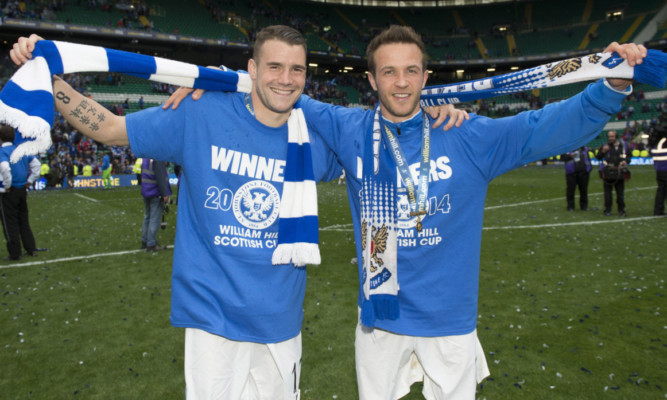How do you best define what is starting to approach a generation of unprecedented success at St Johnstone?
From the Owen Coyle lower league cup runs to the latest semi-final place secured on Tuesday night, bar the heartbreak of that tortuous Gretna last day affair, Saints fans have had it good for 10 years. Very good.
Do you define it by all those semis in that time? Seven of them.
Or by the uninterrupted top six finishes in the Premiership, and the European campaigns that have been secured on the back of them? Four of those.
The fact that every manager since Coyle has been a success? Four again.
Or does it come down to May 17, 2014 when one match won rewrote over a century of history?
They all add up to an indisputable conclusion that we are living through the most special times for this football club that there have ever been, and possibly ever will be.
But there’s something else.
And it was brought home by the news this week that one of the most important players in that Scottish Cup team had just signed for the lowest club in the English Football League.
James Dunne, the Murray Davidson of the side while Murray Davidson was injured, was that XI’s enforcer. And he could play a bit as well. Now he’s at League Two Dagenham and Redbridge on loan.
That a cup-winning midfielder in his prime, albeit an injury-plagued one, is where he is provides irrefutable evidence that St Johnstone is about the collective rather than the individual. But there are plenty of other examples.
Go back over the departures out of McDiarmid in the last few years and you’ll not find many who have bettered themselves on the pitch post-Saints.
Stevie May, Rowan Vine, Jody Morris, Liam Craig, Lee Croft. All would have been wealthier for heading off, but none became better at their work, and two of them came back.
Fran Sandaza has done well, possibly also Cilian Sheridan and Gregory Tade. But they are in a small minority who have found the grass to be greener away from Perth’s Crieff Road.
It brings back memories of provincial clubs like Nottingham Forest and Ipswich Town in the 1980s who lost several players to Old Trafford, White Hart Lane, Highbury and Anfield but those leavers were never as effective as they were at the City Ground or Portman Road.
Saints haven’t won two European Cups or a UEFA Cup but, in the context of their traditional place in their country’s game, their modern day achievements stand out just as brightly as Forest’s and Ipswich’s did 30-odd years ago.
As Forest could afford to lose Birtles and Davenport and not really miss them, and as Ipswich could carry on without Brazil and Mariner, Saints have thrived in the absence of May and Sandaza.
So, with Michael O’Halloran sure to be the next player attracting bids from down south or the Old Firm, the moral of the story is two-fold.
For O’Halloran, there’s every chance that bigger might prove not to be better, and hanging around for another couple of years wouldn’t be the worst idea.
For Saints fans, if and when he goes, don’t panic. With the squad stronger than it has ever been, your cup (be it Scottish or League) will still runneth over.
